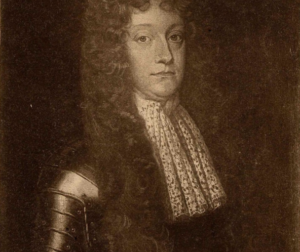Raising of 21st of Foot
1678
The 5th Earl of Mar raised the 21st Regiment of Foot in 1678 as a general increase in the number of royal forces in Scotland to keep the peace and put down brigands, mercenaries and rebels, particularly the Covenanters. Their uniform gave rise to their nickname of Mar’s Old Greybreeks. Ten years later they became the second regiment to carry the new flintlock rifle or fusil; and by 1712, after ten years distinguished service under the Duke of Marlborough at many battles including Blenheim (1704) and Ramilies (1706), they were nicknamed Marlborough’s Own. The Regiment had a glorious history in all corners of the world: from North America to the West Indies; India to South Africa; Napoleanic & Crimean wars; the British Expeditionary Force, Gallipoli, North Africa and France & Flanders in WWI; the British Expeditionary Force, Dunkirk, the Middle East, Madagascar, Burma and North West Europe in WWII.
During the late 17th century, Scotland’s stability and order was under threat in both Highlands and Lowlands from the activities of brigands, mercenaries and rebels, particularly the fanatical Covenanters. To counter this threat, the very samll Royal forces in Scotland were greatly increased in 1678. As part of this increase, Charles Erskine, 5th Earl of Mar, was commisioned Colonel of a new regiment of foot to be raised in Scotland. His commission dated from 23 September and within a few weeks, the regiment was ready to recieve its arms. This regiment was styled The Earl of Mar’s Regiment of Foot in accordance with the custom of those days whereby a regiment took its Colonel’s name; although they were were unofficially referred to as “Mar’s Old Greybreeks” or “The Duke O’Mars Greybreeks”.
The Regiment saw its first action in 1679 at the Battle of Bothwell Bridge when it helped to put down the Covenanter Rebellion which formed following the restoration of King Charles II.
At some date beteen September 1688 and July 1691, the Regiment became a Fusilier Regiment; a special honour as it was only the second British regiment to be so styled – until the 1820s, there were only three Fusilier regiments in the Army. By 1695, it was officially referred to as the the Scots Fusiliers. The title comes from the new flintlock msuket or “fusil” initially on restricted use.
In 1707, on the signing of the Treaty of Union, the name was changed to the North British Fusiliers and in 1712, the “Royal” title was granted. However, many records throughout the 18th century show the name Scots Fusiliers or Royal Scots Fusiliers was the one used in common speech.
Amongst its many nicknames, perhaps the most glorious was that of “Marlborough’s Own”, commemorating its ten years active service under the Duke of Marlborough, participating in all his major battles, including Blenheim (1704), Ramilies (1706), Oudenarde (1708) and Malplaquet (1709). They were also awarded The White Horse of Hanover to appear on their Colours.
The number “21st” was not in fact allocated until 1751, when numbering of regiments was generally introduced. Although the Regiment was the fourth oldest regiment of foot to be raised for the permanent army, its relatively “high” number is due to the fact that in 1694, a Board of Officers, assembled to determine the precedence of the various regiments, decided that the regiments would take precedence with effect from their date of first appearing on the English military establishment. As the Scots Fusiliers had remained in Scotland for the first ten years of its life not moving to England until 1688, it had to take precedence after many regiments which had been raised later but which had been raised in England.
Between 1713 and 1877, the Regiment was known as The 21st (Royal North British Fusilier) Regiment of Foot.

And from 1877-1881, they were known as The 21st (Royal Scots Fusiliers) Regiment of Foot. During the reforms of 1881, the Regiment did not suffer the indignity of being amalgamated, as it already had two regular battalions. However, it did become the County Regiment of Ayrshire, a Lowland regiment and so they were forced to adopt trews and to lose its numbering, becoming The Royal Scots Fusiliers.

